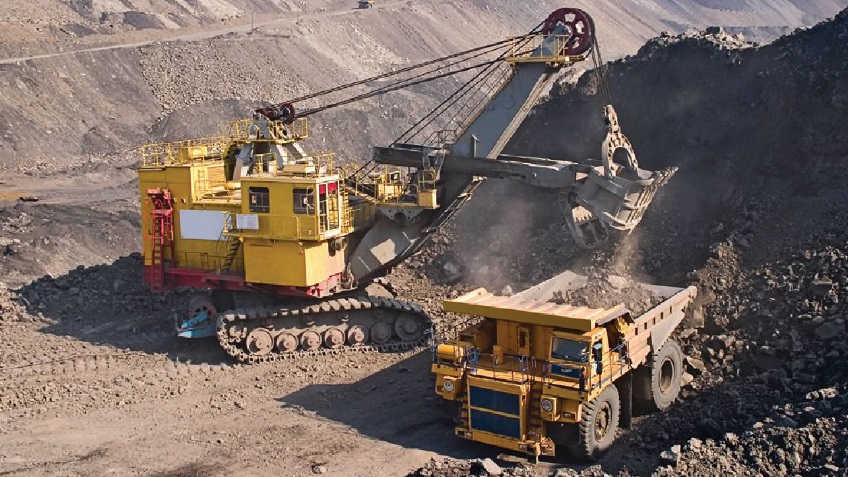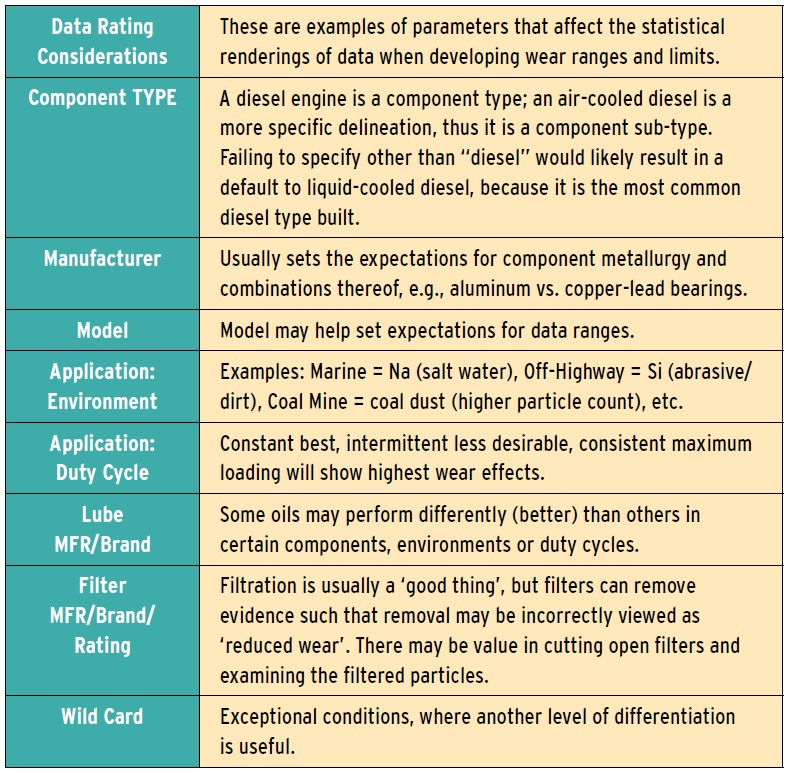Complexity in oil analysis information: Part III
Jack Poley | TLT On Condition Monitoring March 2012
Make sure your data reports are as complete and accurate as possible.

www.canstockphoto.com
LAST COLUMN I BEGAN DEFINING DATA RATING—THE FIRST OF THREE PRIMARY ASPECTS OF RENDERING AN OIL ANALYSIS REPORT. In addition, there are two important nuances of data rating: (1.) component type and parameters and (2.) manufacturers and models (i.e., parameters that need differentiation in order to have test result limits that are appropriate for a given component).
The environment (external conditions) in which a component labors and the manner in which the component is used (duty cycle) are fundamental parameters governing an evaluation because test data are influenced significantly by these factors. Duty cycle and external conditions greatly help ground the evaluation, providing relevant perspective and eliminating some possibilities.
EXTERNAL CONDITIONS
•
Deep-draft marine operations (offshore oil rigs). Clearly exposed to risk of saltwater contamination in a machine’s oil sump, especially those operating on deck. Sodium (Na) is certainly going to be on the test list (if for no other reason because nearly every lab includes Na as a standard metal to be reported) but now points first to seawater contamination before other possibilities might be considered. Na limits are likely going to have to be higher for certain component types in this environment.
•
Off-highway operations. Clearly exposed to elevated risk of abrasives (dirt). This requires certain considerations by the evaluator at the bare minimum:
1.
Watch wear levels closely to see if there’s a correlation with silicon (Si), usually the element that signals the abrasive contamination. While aluminum (Al) may correlate at lesser concentrations, Al as a wear metal also must be considered. Iron (Fe) will usually be first and highest of the wear metals, but there are exceptions. Here the evaluator is best placed if he’s fully apprised of the component’s metallurgy so that he can assess the likelihood of various scenarios.
2.
Advise precautions for lube handling, transfer and storage. Sometimes abrasives are introduced rather than ingested.
3.
Do not expect to restrict the Si level in this environment to levels that are less exposed such as an enclosed plant or with an over-the-road (OTR) tractor operating on an asphalt or concrete surface. Off-road environments, especially mining, are necessarily dirty, and there always will be some abrasive ingestion into various compartments through vents and breathers. The goal is to minimize such events but mostly to quickly attend to levels that are high enough and could have been controlled, as such diligence will positively affect equipment longevity beyond normal wear and tear.
 Off-road environments always have some abrasive ingestion into various compartments through vents and breathers.
Duty Cycle
• Constant speed.
Off-road environments always have some abrasive ingestion into various compartments through vents and breathers.
Duty Cycle
• Constant speed. The state most machinery thrives in. Wear levels will be at their lowest ranges (all other things being equal).
•
Intermittent (Stop and Go). Run conditions least favorable to machinery.
•
Applied loads in excess of a component’s rated tolerance. Risk of fatigue failure. Wear levels will likely be at their highest ranges.
The more one can account for complete, accurate information regarding manufacturers, models and applications for a given component, as well as a full description of its mechanical function, the better the ability to set accurate data limits and ranges for that component’s samples.
Having defined the primary information about a component, there are secondary pieces of information that may influence the correct setting of limits, including:
•
Lubricant: MFR/Brand, viscosity.
•
Filter: MFR/Brand, micron rating, load capacity.
•
Wild card: Unusual properties with respect to metallurgy or extra capacity sump or other exceptional situations.
Given that this information is available with sufficient examples, it is easy to apply statistics to ascertain if these secondary pieces of information are relevant. One would perhaps expect a synthetic lube to provide longer service life, given reasonable contamination control. Likewise filtration can have a significant effect, including removal of particulate metallic evidence. Such removal may or may not reflect wear reductions, but it will, nevertheless, result in lower limits and ranges if the wear particle removal rate is substantial.
Figure 1 shows the various considerations in preparing to rate data. The goal should always be to differentiate in as many meaningful ways as possible, given there is a sufficient data population for the desired differentiation. It is better to back-pedal to generic considerations rather than relying on an insufficient sample base.
 Figure 1.
Figure 1.
 Jack Poley is managing partner of Condition Monitoring International (CMI), Miami, consultants in fluid analysis. You can reach him at jpoley@conditionmonitoringintl.com
Jack Poley is managing partner of Condition Monitoring International (CMI), Miami, consultants in fluid analysis. You can reach him at jpoley@conditionmonitoringintl.com.
For more information about CMI, visit www.conditionmonitoringintl.com.